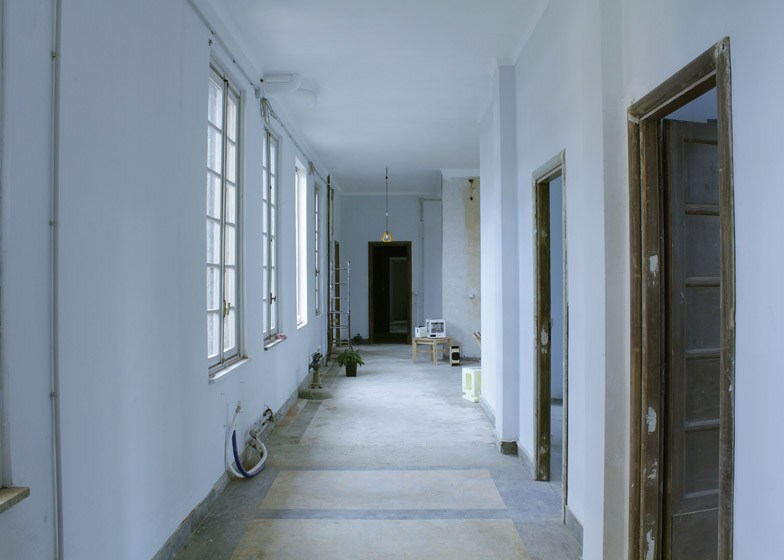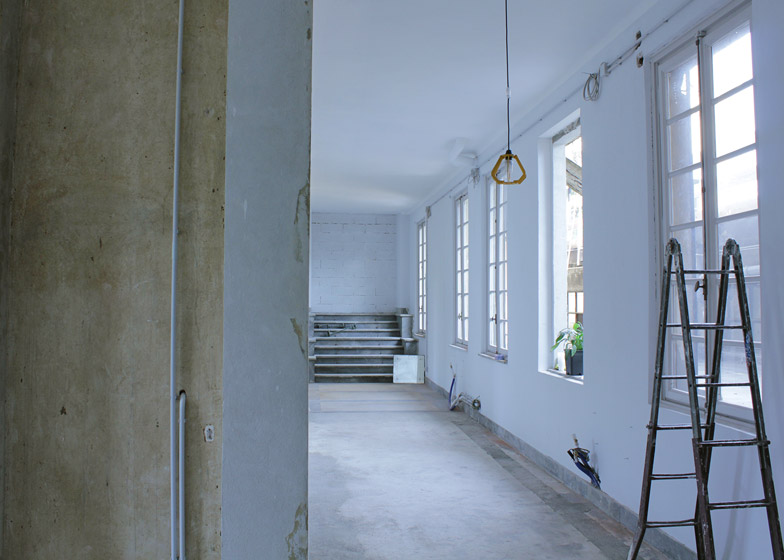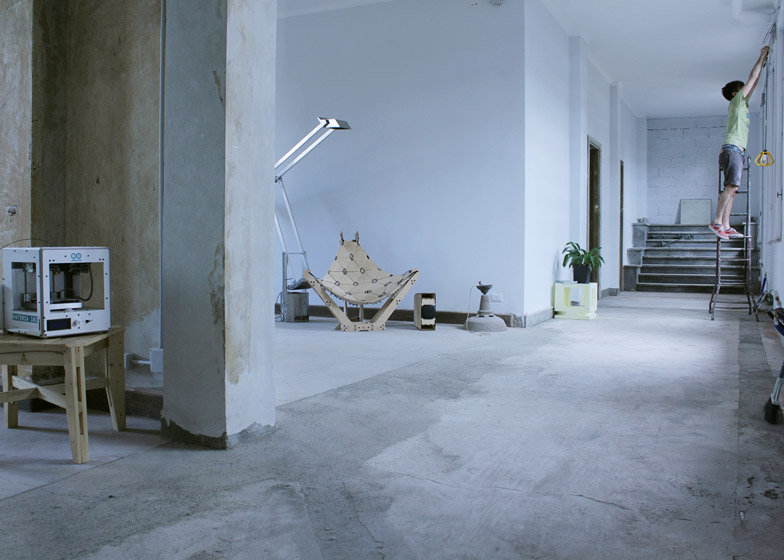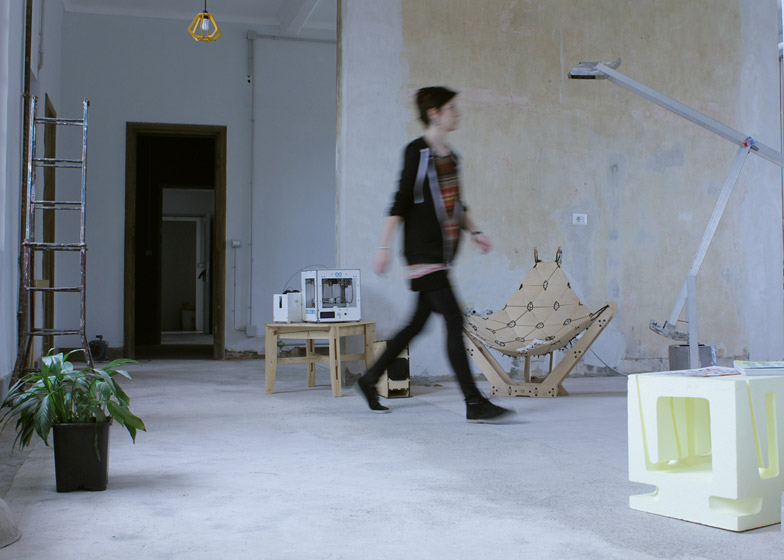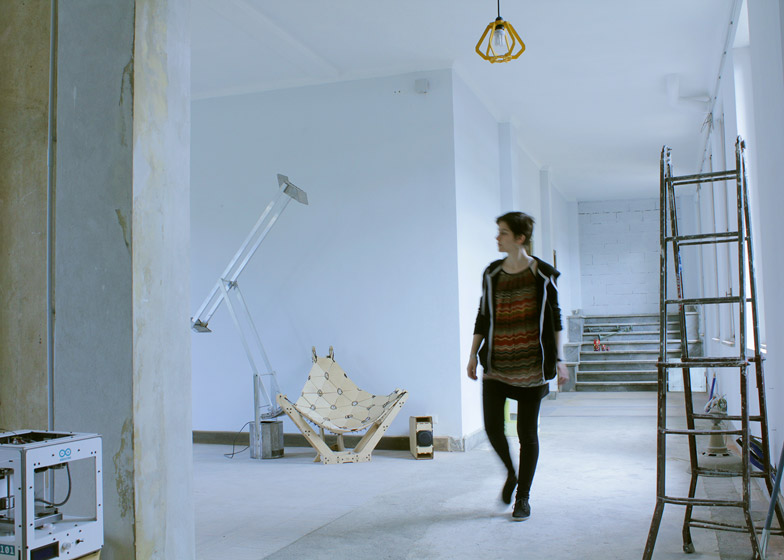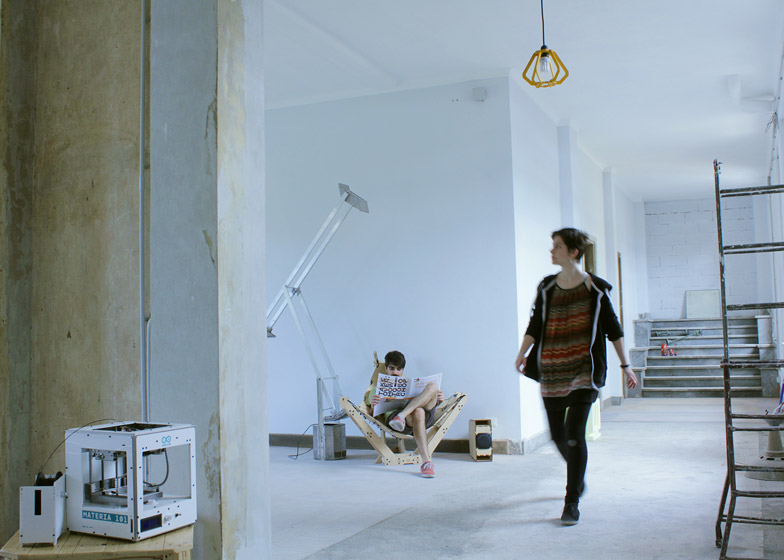Science fiction writer Bruce Sterling has curated an apartment inside an old industrial building in Turin, Italy, bringing together various designs to create the "open-source connected home of the future" (+ slideshow).
Described by Sterling as "a laboratory for experiments in home automation and the Internet-of-Things", Casa Jasmina is an apartment furnished with more than 15 different objects or devices that are either made using open-source blueprints, or feature connected home technologies.
"This building, the Garrone Foundry, was built in 1919. No one has lived in this part of the building since 1974," said Sterling in an introduction to the exhibition. "We have just revived this small, special part of Torino. The lights are on, the water is running, and inside this unusual space we'll be carefully studying daily life in the 2020s."
"This is a 'home of the future,' and, especially, it is a Make-in-Italy home of the Turinese future."
The exhibition will run for two years, and aims to combine local furniture and interior design expertise with open-source electronics.
The apartment has a kitchen, library, bedroom and bathroom, and will be available to book on home rental website Airbnb, allowing the public to live with the designs.
The space will also act as a laboratory for testing new products and ideas, with the furnishings and devices in the space continually evolving and changing.
The building is the home of one of the other organisers of the show – Officine Arduino, an interactive electronics manufacturer specialising in easy-to-use computer hardware that runs off open-source software.
Open-source design and software are products for which the original code, plans and instructions are made freely available for use and adaptation by the public, while connected home technologies use data and wireless devices to respond to changing conditions and actions.
Much of the furniture in the space has been made by local "maker" businesses, who manufacture their own products.
"Maker spaces, hackspaces and collaborative design offices are appearing all over the world as part of a big, global trend toward open-source design, networked collaboration and digital manufacturing," said Sterling. "But – in the future – what would it be like to live that way in daily life?"
"Casa Jasmina, the 'open-source connected home of the future,' is here to explore that opportunity."
Among the objects in the exhibition are Noctambula by Italian studio Fattelo, an LED lamp made from a milk carton without any soldered parts or wires, and 9 Random Spots by artist Marco Brianza – an artwork that displays different patterns of coloured lights in response to fluctuations in background levels of radiation, using Arduino software to interpret the data picked up.
Open Structure by Intrastructures is a modular building system designed to allow anyone to build their own structure, while Aker is a growing kit for users to produce their own food using modular containers based on open-source designs.
Italian brand Valcucine has also contributed kitchen equipment to the apartment, and is inviting participants to "hack" and adapt their products as part of the exhibition.
"We are happy to have such a well designed industrial piece in our home as it will set an important standard for the next projects that are going to be installed in the apartment," said Lorenzo Romagnoli, interaction designer at Officine Arduino.
"We want makers to start making objects that can fit the home environment."
Live updates of new projects and experiments being produced during the exhibition will be broadcast on a specially created website.
Casa Jasmina opened on 6 June at Via Egeo 16, Turin, and will run for two years.

